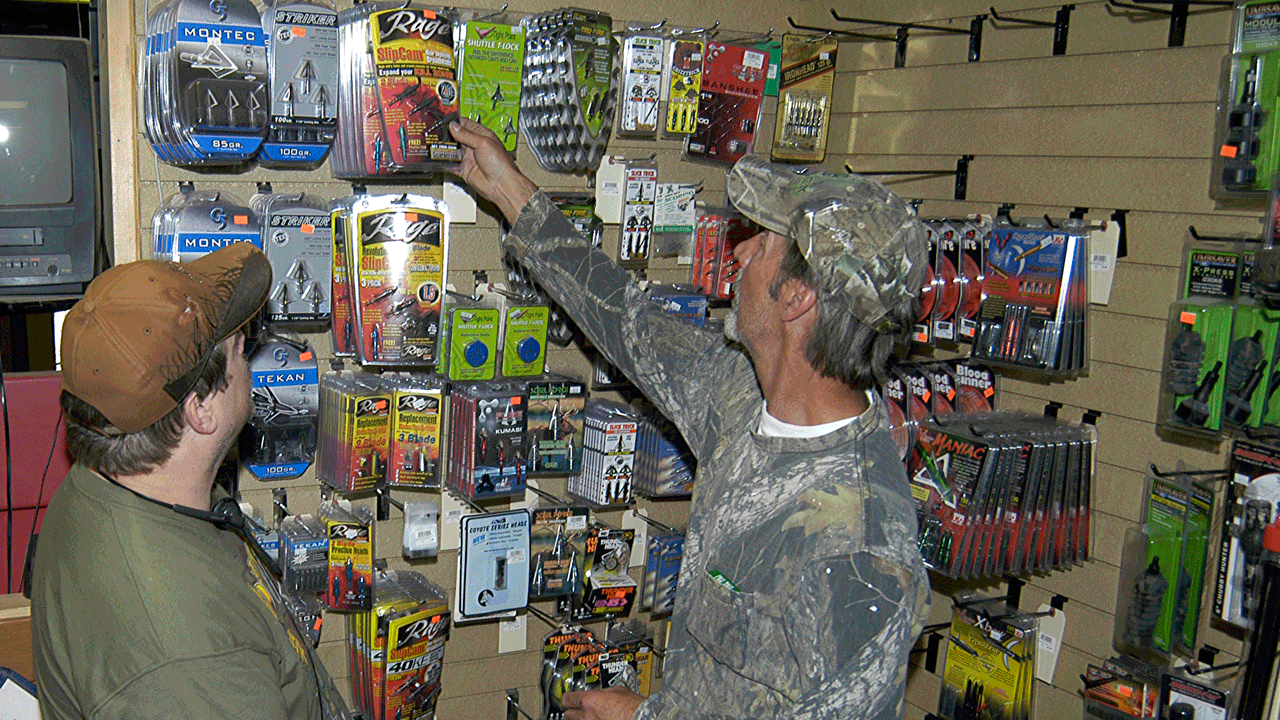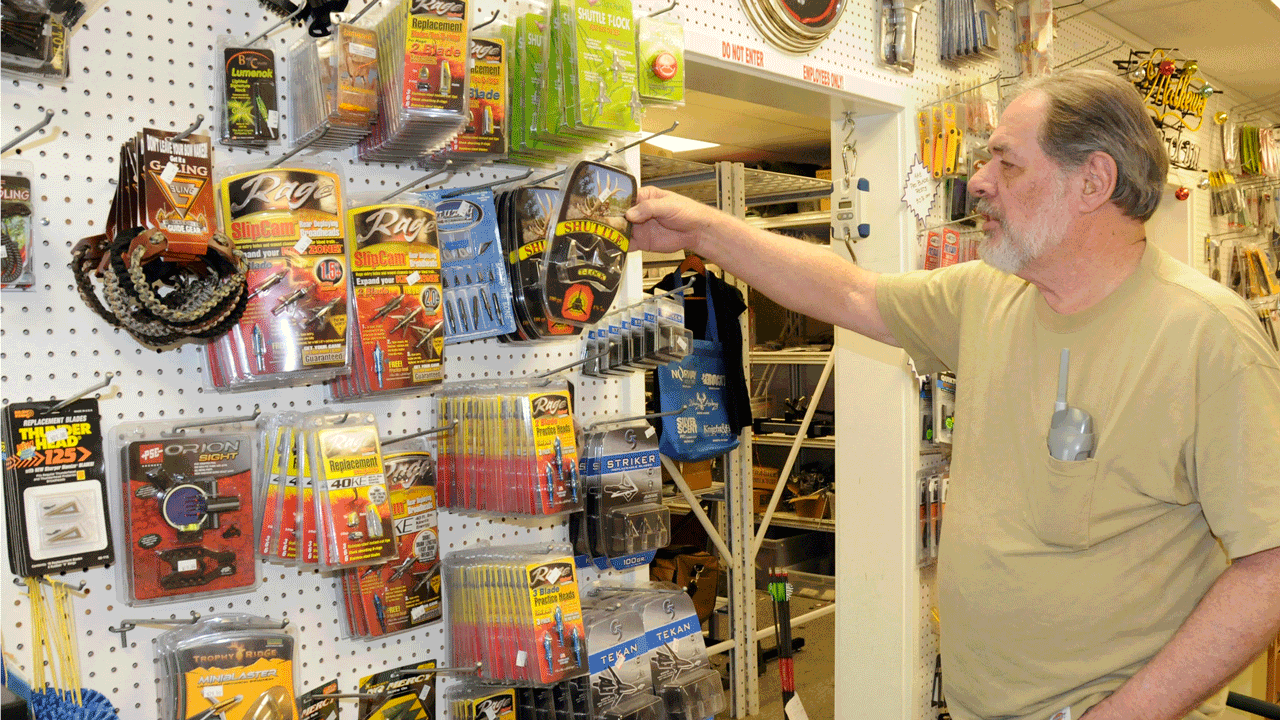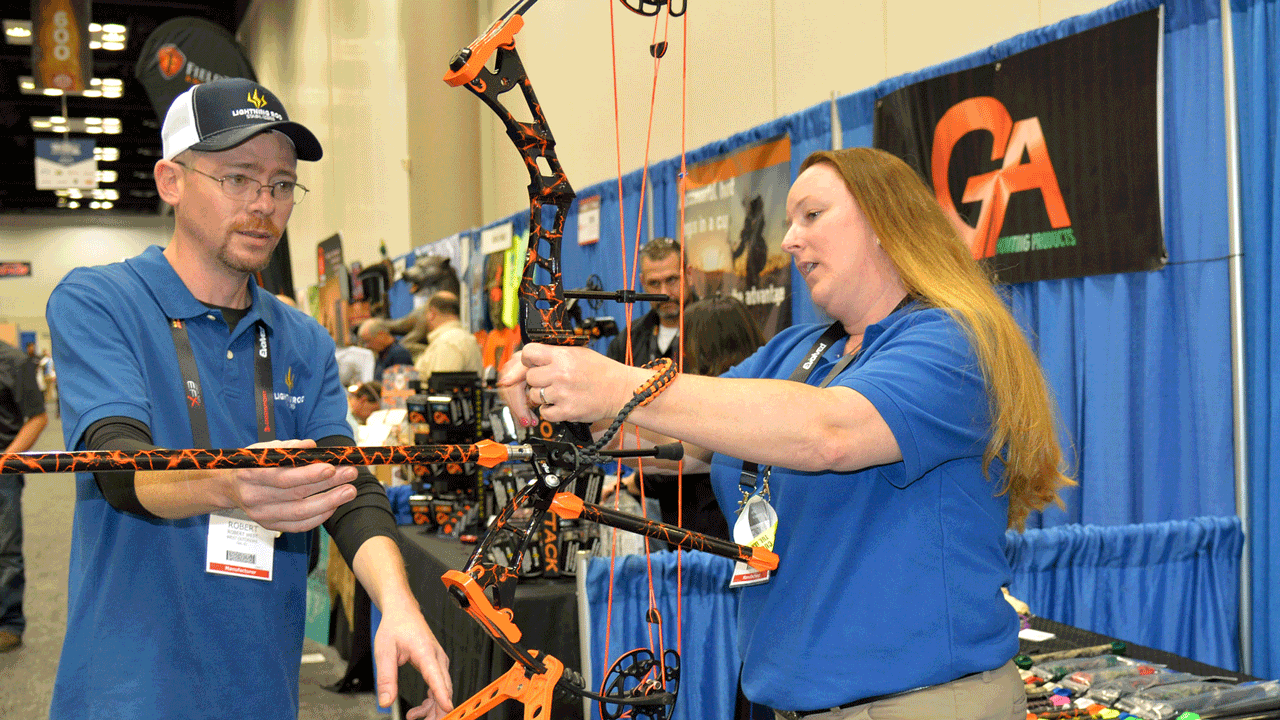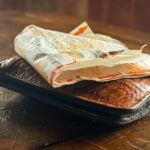Bowhunters who think they’re getting great “factory-direct” deals from online vendors might actually be buying counterfeit archery products that are dangerously inferior to the brand-name products they copied. And if legitimate archery manufacturers hope to curtail counterfeiters, they must make it easy for customers to report phony products they find online.
Those were the messages delivered in early January when William Ross, deputy director of the National Intellectual Property Rights Coordination Center, addressed about 80 manufacturing representatives at the annual ATA Trade Show.

Counterfeiters often copy brand-name bow sights, broadheads, stabilizers and other archery gear. Archers and bowhunters should buy from legitimate “brick-and-mortar” pro shops near home.
The ATA Trade Show is the archery/bowhunting industry’s largest event worldwide. It attracts over 625 manufacturing companies, and over 9,300 attendees representing retailers, distributors, suppliers and media from the United States and 26 foreign countries.
“Give (your customers) easy ways to report what they see and find,” Ross told the manufacturers. “Put a tab on your website they can click. Register your trademarks and copyrights. Work with our Customs and Border Patrol offices to show them your products so they recognize counterfeiting attempts. “We need your help,” Ross continued. “Government (agencies) can’t do this alone. We can’t seize or arrest our way out of this problem. It’s everyone’s problem, and requires everyone’s awareness and cooperation.”
The IPR Center is part of the U.S. Immigration and Customs Enforcement and Homeland Security Investigations office. It works to protect U.S. intellectual property rights and enforce international trade laws. Ross said the IPR Center works with 23 partner agencies, including 19 federal agencies, Interpol, Europol and the governments of Canada and Mexico.
But even all that investigative power can’t thwart every person importing and selling counterfeit archery products. Ross said it’s challenging to monitor the United States’ 328 ports of entry, 325,000 importers and 100,000-plus miles of borders and shorelines. Further, those entry points process about 67,000 containers daily, 28 million cargo entries annually, and 250 million postal and express-carrier entries annually.
Federal agencies made 31,560 seizures on goods worth an estimated $1.4 billion in 2016, but it’s physically impossible to inspect and verify every item arriving from abroad. The internet increases those challenges. Ross said efforts to fight counterfeiters 15 years ago often meant sending sharp-eyed investigators to flea markets and swap-meets on spring and summer weekends to identify bogus goods.
But online sales in recent years generate shiploads of counterfeit archery products brand-name products from China, India, Taiwan, Korea and Hong Kong. In a 2017 interview, former ATA CEO/president Jay McAninch said studies of counterfeiting’s impact on the U.S. economy estimated that 87 percent of lost value came from products made in China, which accounts for 70 percent of all bogus goods.
“China accounts for roughly $9 of every $10 in lost value by counterfeiting,” McAninch said. “It’s extremely difficult to enforce copyrights, trademarks and patents, and take legal actions in places like China.”
Those frustrations spurred the ATA Board of Directors in July 2017 to announce it would cancel the membership of any manufacturer caught counterfeiting, and banish the company’s representatives from attending its trade show. The ATA encourages archers and bowhunters to buy from local “brick-and-mortar” pro shops, and to avoid buying online from unknown vendors.

Some counterfeit products look so authentic they initially fool legitimate manufacturers, who must inspect everything from clamshell packaging to the product’s tool-and-die marks, sometimes with a magnifying glass.
The ATA also directs its member-manufacturers to place the ATA logo on their products so consumers know they’re originals. Nonmember manufacturers that hijack the logo face legal action by the ATA to protect the logo’s integrity.
Meanwhile, the IPR Center has worked with regulators to sever over 300,000 links on social media that were once counterfeiting conduits. The Center also urges banks and credit-card companies to take down payment platforms of identified counterfeiters. Further, it asks the U.S. Post Office, UPS and FedEx to not process packages from identified counterfeiters.
Even so, fighting counterfeit archery products is difficult. Ross said counterfeiters are often skilled criminals whose imitations mimic authentic products and their packaging. They also target industries with high brand-name recognition and brand-loyal customers, and quickly shift their efforts to other products when they’re found out.

Counterfeiters are often skilled criminals who target industries with high brand-name recognition and brand-loyal customers, and quickly shift to other products when found out. It’s important for consumers to recognize when they are purchasing real goods versus counterfeits in order to make sure they’re getting the high quality product they are paying for.
Some counterfeit archery products look so authentic they initially fool legitimate manufacturers, who must inspect everything from clamshell packaging to the product’s tool-and-die marks, sometimes with a magnifying glass. In other cases the phonies are obvious because they mismatch the product’s colors and logos, and misspell words on the packaging.
Counterfeiters also use photos of authentic products in online advertising, and price imitations just low enough to avoid suspicion.
“A few years ago you knew a product was likely counterfeit if it cost half as much as the real thing,” Ross said. “It was too good to be true. They’ve learned that if they sell a product for 10 percent off, people think it’s legitimate.”
McAninch said counterfeiting is not a victimless crime. When customers receive phony product and it fails, they blame the legitimate manufacturer. And when that manufacturer realizes it didn’t make the product, it often declines to replace it or refund the buyer’s money, which sparks suspicions, hard feelings and worse.
“One of our big concerns is safety,” McAninch said. “When you have people drawing counterfeit bows to shoot counterfeit arrows and broadheads from treestands made from inferior metals, something is bound to give at the worst possible time. It not only puts people at risk, but it increases the chances of wounding losses when arrows don’t fly straight or broadheads break on impact.”
In addition, because bogus products are often shipped direct to homes and businesses, and identified as gifts, counterfeiters pay no federal excise taxes on the products. That gives counterfeiters an unfair advantage over legitimate manufacturers, who pay up to an 11 percent tax on the sale. Those lost revenues also hurt state and federal wildlife-management programs that rely on FET funding for research, hunter education and shooting ranges.
Even so, not all customers care. They simply want low prices, and blame companies for being “greedy” or inviting problems by contracting with legitimate overseas manufacturers.
Consumers should realize, however, that knowingly buying counterfeit archery products is illegal. Manufacturers dislike suing customers, but they will if it’s their only hope for survival. The music industry, for example, cracked down on digital pirates about 20 years ago when it sued Napster and individuals who shared and downloaded music without compensating the artists and music publishers.

 By
By 



